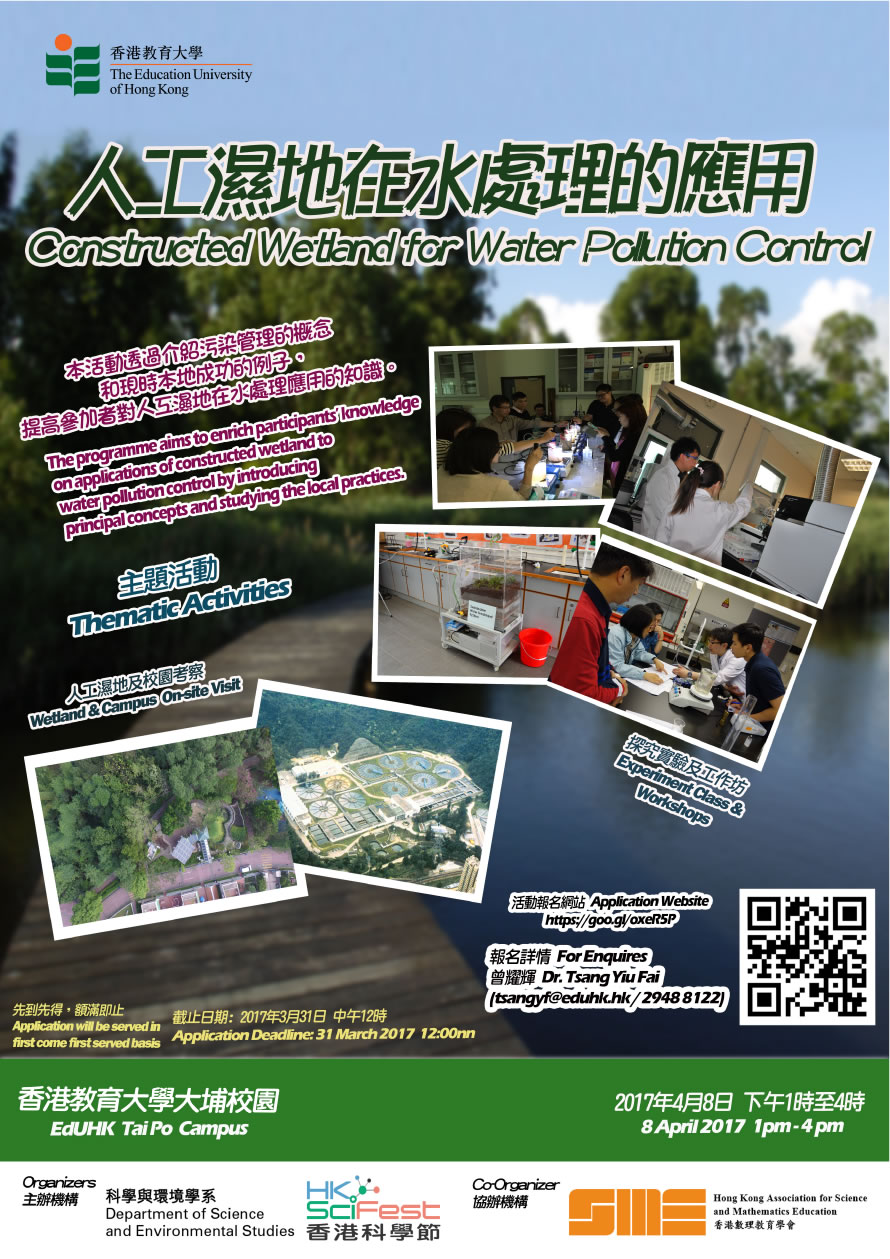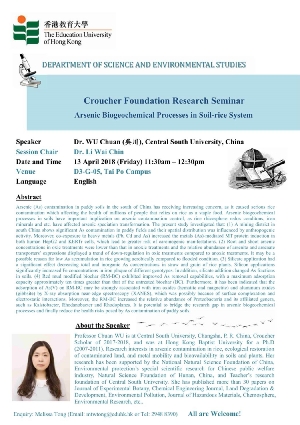

 |
|
Speaker |
Dr. WU Chuan (吳川), Central South University, China |
|
Session Chair |
Dr. Li Wai Chin |
|
Date and Time |
13 April 2018 (Friday) 11:30am – 12:30pm |
|
Venue |
D3-G-05, Tai Po Campus |
|
Language |
English |
Abstract
Arsenic (As) contamination in paddy soils in the south of China has receiving increasing concern, as it caused serious rice contamination which affecting the health of millions of people that relies on rice as a staple food. Arsenic biogeochemical processes in soils have important implication on arsenic contamination control, as rice rhizosphere redox conditons, iron minerals and etc. have affected arsenic speciation transformation. The present study investigated that: (1) A mining district in south China shows significant As contamination in paddy fields and their spatial distribution was influenced by anthropogenic activity. Moreover, co-exposure to heavy metals (Pb, Cd and As) increased the metals (As)-mediated MT protein induction in both human HepG2 and KERTr cells, which lead to greater risk of carcinogenic manifestations. (2) Root and shoot arsenic concentrations in oxic treatments were lower than that in anoxic treatments and the relative abundance of arsenite and arsenate transporters’ expressions displayed a trend of down-regulation in oxic treatments compared to anoxic treatments. It may be a possible reason for low As accumulation in rice growing aerobically compared to flooded condition. (3) Silicate application had a significant effect decreasing total and inorganic As concentrations in straw and grain of rice plants. Silicon applications significantly increased Fe concentrations in iron plaque of different genotypes. In addition, silicate addition changed As fractions in soils. (4) Red mud modified biochar (RM-BC) exhibited improved As removal capabilities, with a maximum adsorption capacity approximately ten times greater than that of the untreated biochar (BC). Furthermore, it has been indicated that the adsorption of As(V) on RM-BC may be strongly associated with iron oxides (hematite and magnetite) and aluminum oxides (gibbsite) by X-ray absorption near-edge spectroscopy (XANES), which was possibly because of surface complexation and electrostatic interactions. Moreover, the RM-BC increased the relative abundance of Proteobacteria and its affiliated genera, such as Kaistobacter, Rhodanobacter and Rhodoplanes. It is potential to bridge the research gap in arsenic biogeochemical processes and finally reduce the health risks posed by As contamination of paddy soils.
About the Speaker


|
13 Apr 2018 |

|
11:30 - 12:30 |

|
D3-G-05, Tai Po Campus |




